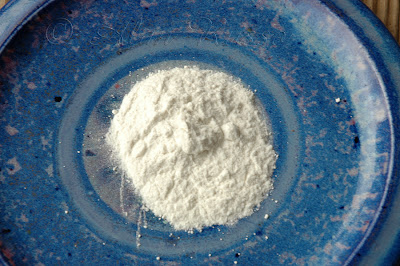If you read "Edible Canna" ( http://ethnobotanist128.blogspot.com/2013/08/edible-canna.html ) you may remember that I mentioned that Canna edulis is grown for the starch in it's edible tubers.
The best time of the year to harvest the tubers are in the Fall and Winter when the foliage has died back and all the starch and nourishment is being stored in the roots for the plant to use in the spring to start growing again. As you can see from the photo above a hard frost killed the my Canna rather quickly this year and it wasn't long after I decided to give the starch extraction a try.
First, of course, I dug up some tubers. The tubers were full of mud and dirt so I took them to the hose and used a strong jet of water to remove all the dirt etc from around the roots and tubers. I was amazed at how many rootlets there were growing from the tubers.
I decided to remove the rootlets from the tubers before processing thinking there probably was not much starch in them anyway.
Now, I have processed starch from Cattail Rhizomes before and I figured this wasn't going to be much different. I idea is to pound the Tubers in water and allow the starch to settle out, pour off the water, rinse the starch and continue till the water is clear. I decided to cheat this time and use a blender because I didn't get that many tubers and I wanted to get as much starch out of them as I could.
I cut them up with a knife before putting them in the blender. This is also when I took the opportunity to taste the tubers for the first time. They were very bland with a hint of sweetness to them, certainly not bad, and I think I could eat a quantity if I had to in a survival situation.
I added all the cut tubers to the blender and added about twice as much water as tubers so they would blend well. Something unexpected started to happen as the water started to sit, it started to turn brown! I figured it was some chemical in the Tuber reacting with the oxygen and hoped the starch was not turning brown also.
I was happy to see the starch was white. One last time I poured off the water and this time I scraped the starch out onto a paper towel to get most of the water out than put it on a plate to fully dry.
As you can see the starch is pure white and powdery like Arrowroot or Kudzu starch. I tasted it but it really had no flavor, which is good, so it doesn't impart a flavor to the dish you are thickening. All that's left to do is store it in a moisture proof jar and wait till I cook up some dish that calls for a thickener.
Peace





























